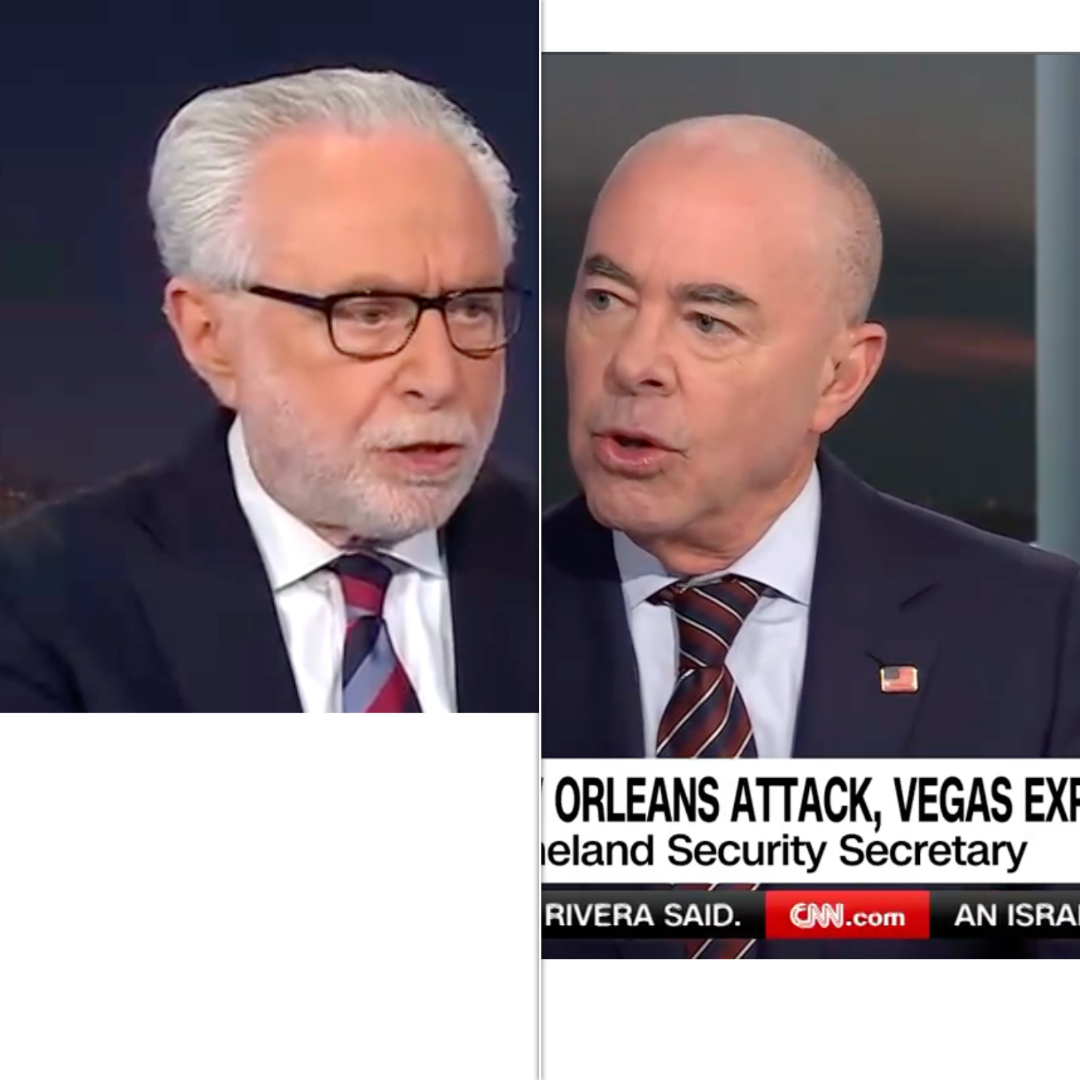In the aftermath of a deadly vehicle attack in New Orleans, CNN’s Wolf Blitzer pressed Homeland Security Secretary Alejandro Mayorkas on whether local officials failed to act on federal warnings. Mayorkas defended the city, emphasizing the efforts of local authorities and the challenges posed by lone offenders.
CNN’s Wolf Blitzer Presses DHS Sec On ‘Warning’ Memo About Potential Vehicle Attacks

Key Takeaways:
- Federal Warnings Issued Before Attack: DHS had warned of potential lone offender attacks involving vehicle ramming weeks before the New Orleans incident.
- Mayorkas Defends Local Response: The DHS Secretary stated it was unfair to accuse New Orleans of negligence regarding the warnings.
- Attack Classified as ISIS-Inspired Terrorism: The FBI labeled the attack an act of terrorism, inspired by ISIS, and confirmed the suspect acted alone.
- No Link to Las Vegas Incident: Authorities found no definitive connection between the New Orleans attack and a separate Cybertruck explosion in Las Vegas.
- Collaboration Between Agencies Highlighted: Mayorkas emphasized ongoing cooperation between federal, state, and local agencies to address threats.
Federal Warnings Preceded New Orleans Attack
Weeks before the New Year’s Day attack in New Orleans, the Department of Homeland Security (DHS) issued bulletins warning law enforcement agencies about potential threats from “lone offenders,” specifically mentioning vehicle ramming attacks during the winter holidays. One such bulletin, released on December 6, stated:
“Lone offenders pose [the] most likely threat of violence to soft targets in the Homeland during winter holidays.”
The bulletin highlighted that:
“Lone offenders have historically used simple tactics, such as edged weapons, firearms, or vehicle ramming, due to their ease of access, ability to inflict mass casualties, and lack of required training.”
These warnings were part of regular communications from DHS, the FBI, and the National Counterterrorism Center to federal, state, and local law enforcement agencies, particularly ahead of holiday seasons.
Blitzer Presses Mayorkas on Local Response
In light of the attack, CNN’s Wolf Blitzer confronted Homeland Security Secretary Alejandro Mayorkas about whether New Orleans had failed to act on these federal warnings.
“Did New Orleans screw up basically, not pay attention to that warning?” Blitzer asked during a televised interview.
“I don’t think that’s fair to say, Wolf. That wouldn’t be a fair conclusion to draw,” Mayorkas responded, defending the city’s actions.
Mayorkas Defends Local Officials
Mayorkas emphasized that the December bulletin was not the first of its kind and that threats from lone offenders are a known challenge.
“Local officials do the best they can in securing the well-being of their residents,” he said. “We work very closely with our state and local partners.”
He also noted that the suspect was an Army veteran and U.S. citizen, pointing to the complexities of individuals radicalized domestically.
Attack Classified as ISIS-Inspired Terrorism
Christopher Raia, deputy assistant director of the FBI’s counterterrorism division, provided further details during a press briefing. He identified the suspect as Shamsud-Din Jabbar, who died in a shootout with police.
The FBI believes Jabbar acted alone in what they described as an “act of terrorism” that was “100% inspired by ISIS.”
No Definitive Link to Las Vegas Incident
Raia addressed questions regarding potential connections between the New Orleans attack and a Tesla Cybertruck explosion in Las Vegas. Both suspects rented vehicles through Turo, a peer-to-peer car rental app.
“There is no definitive link between the truck attack and the Tesla Cybertruck explosion in Las Vegas,” Raia stated, clarifying that any similarities appeared coincidental.
Emphasis on Interagency Collaboration
Both DHS and the FBI highlighted the importance of cooperation among federal, state, and local agencies in addressing threats from lone offenders and radicalized individuals.
Mayorkas reiterated, “We have spoken on the phenomenon of U.S. residents radicalized to violence by a foreign terrorist [organization] or other ideologies.”
Conclusion
The New Year’s Day attack in New Orleans underscores the ongoing challenges faced by law enforcement in predicting and preventing lone offender acts of terrorism. As investigations continue, federal and local agencies remain committed to safeguarding communities through vigilance and collaboration.











